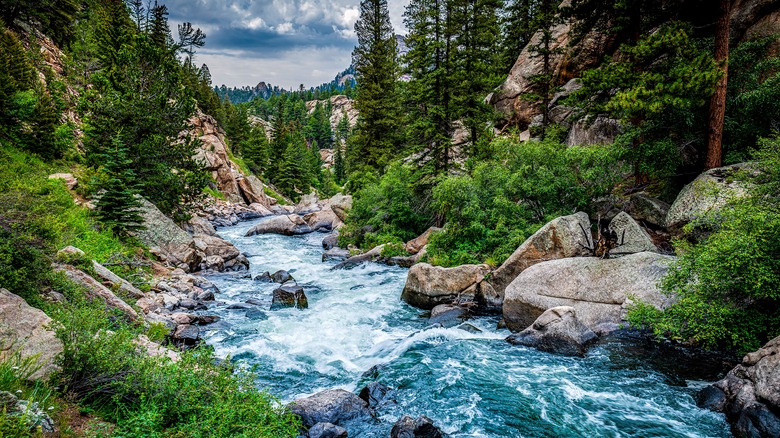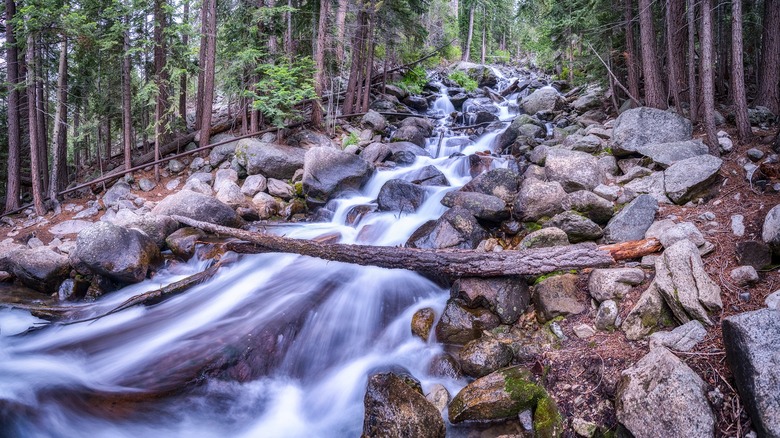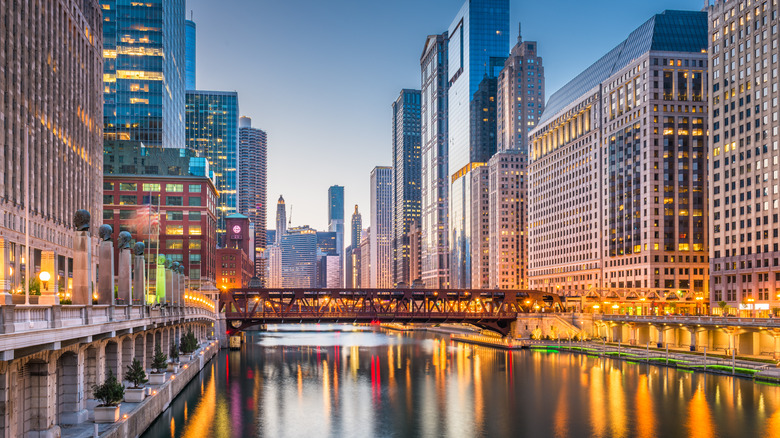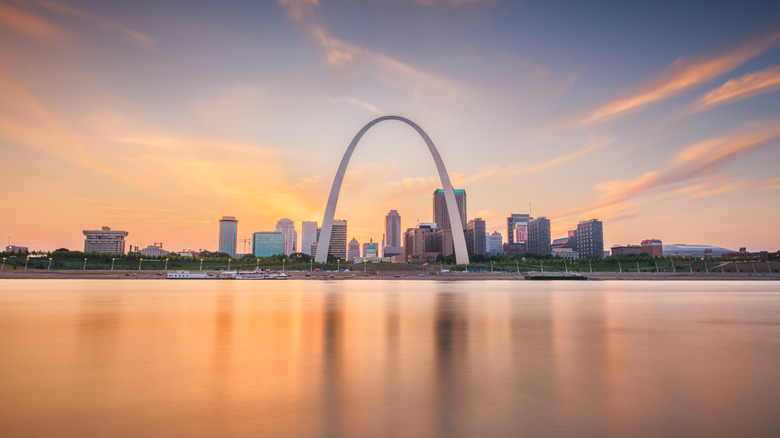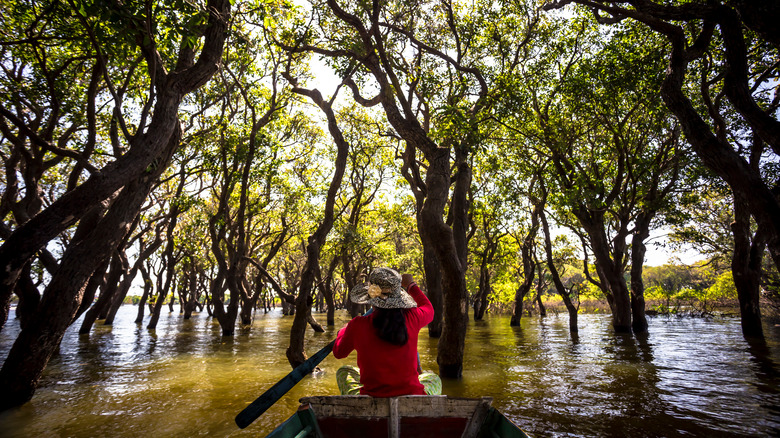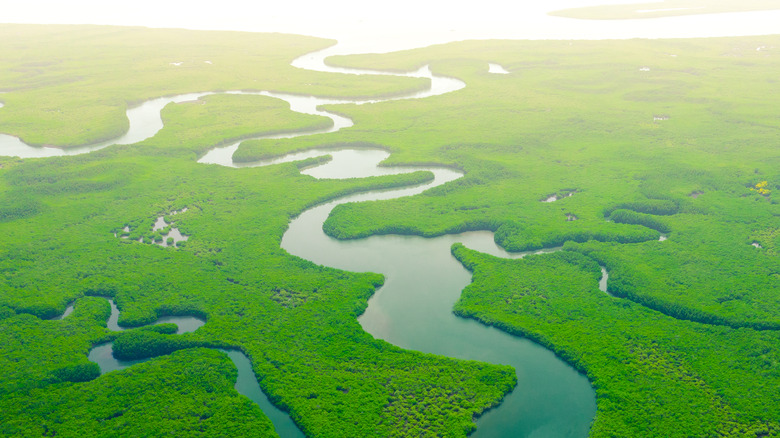Can A River Ever Change Direction?
It seems like some kind of strange supernatural omen, but not only can rivers change direction, it's pretty common, according to USA Today. In 2016, for instance, a Yukon Territory river with its source in the Kaskawulsh Glacier reversed direction — flowing into a different river — after the glacier itself moved in an act of "river piracy," according to scientists. In this case, the river, which had previously flowed from south to north, moved instead from north to south to join the Kaskawulsh River toward the Gulf of Alaska.
There, the cause of the glacier's retreat and the river's transformation was likely global warming, but all sorts of ecological and geological events can cause rivers to change directions. In fact, at least one major river in the United States already flows backward, according to Mental Floss — and might switch to running forward again in the event of an ongoing drought. Here's why.
It's a myth that rivers always flow from north to south
First of all, rivers don't naturally flow in a single direction — and their direction has little to do with magnetic currents. In general, rivers simply move from higher elevation to lower elevation, according to Dr. M. Kamiar, a professor of geography at Florida State College, to Metro Jacksonville. For years, the professor would hear students say that the Nile River and Florida's St. Johns River were the only two rivers in the world to flow from south to north. In fact, Kamiar said, more rivers run northward than any other direction.
Rivers always take the easiest path downhill, whether it's north, south, east, or west. This is ultimately why rivers sometimes change direction — the easiest path may change due to geological, environmental, or even man-made obstacles. The exception to this rule is when the tide changes at rivers that empty into the ocean, which usually causes the rivers to temporarily change direction at the estuary and several miles upstream (St. Johns River, in fact, does this).
The Chicago River runs backwards
Though rivers change direction naturally, possibly the most famous instance of a river changing direction was not a natural occurrence, but the result of human design. The Chicago River used to drain into Lake Michigan, which was problematic for early settlers of the region, since the river was used to dispose of waste and the lake was used to provide drinking water, according to Mental Floss. This likely caused some disease outbreaks in the early years of the city's history — drinking water contaminated with waste can cause diseases like cholera and typhoid fever.
In the late 19th century, the engineer Sylvester Chesbrough created an ambitious proposal to solve this issue (via WTTW). To clean up the city's water supply, they would redirect the Chicago River away from the Great Lake, diverting it instead toward the Mississippi River. It would cost millions of dollars and take years of manpower, but the end result would not just be cleaner drinking water — the redirected river would give Chicago a watery path to the Mississippi and the trading opportunities along that lengthy river.
The plan worked a little too well. Today, the Mississippi connection has led invasive Asian carp from southern ponds up toward the Great Lakes, threatening natural ecosystems.
The Mississippi has also switched directions a few times
The Mississippi, too, has switched directions, according to Mental Floss. In 1811 and 1812, three powerful earthquakes hit the eastern United States, and eyewitness accounts said the cataclysmic event caused the current of the southern river to temporarily switch directions. One man who ran to his boat to escape the earthquake found that "the current changed, and the boat hurried up, for about the space of a minute, with the velocity of the swiftest horse," until the waters calmed and the normal current resumed.
Though it isn't clear that this was a true reversal of the river rather than an optical illusion caused by the earthquake, more recently the river has flowed backwards during the hurricanes Issac, Katrina, and, most recently, Ida. In that 2021 storm, 150 mph winds and a powerful storm surge resulted in the river changing direction for about four hours.
The Tonle Sap River changes directions a few times every year
Lest you think that rivers changing directions is just a strange quirk of United States geography, know that it happens all around the world during storm surges, earthquakes, and other huge events. At least one of these rivers changes direction with predictable regularity: Cambodia's Tonle Sap River, according to Condé Nast Traveler. During monsoon season, between May and October, the nearby Mekong River becomes so voluminous that it diverts the Tonle Sap from flowing into the ocean (to its south) to flowing back into the Tonle Sap Lake (to its north).
The result is that the Tonle Sap spends half of the year flowing in one direction and half the year flowing in the opposite direction. And at the end of the rainy season, when the river switches direction back to the sea, Cambodia even has a party to celebrate: Bon Om Tuk, a three-day "water festival."
Even the mighty Amazon has changed direction
Even the Amazon River — the largest river in the world by volume, per Britannica — has changed directions. Right now, it flows from the Andes mountains near the Pacific Ocean into the Atlantic Ocean. But it used to flow from east to west, during the middle of the Cretaceous Period, according to LiveScience.
This was 100 million years ago when your ancestors looked like a bunch of weird rats and huge dinosaurs roamed the earth. It was also when South America and Africa were still breaking apart. When the continents finally separated, it raised the east coast of South America, sending the Amazon toward its center. But South America was still developing its vast mountain ranges. In the center of the continent, the Purus Arch broke the river in two, so that on the east side of the continent the river flowed toward the Atlantic, and on the west side the river flowed to the Pacific. Eventually, however, the Andes on the west side of the continent grew tall enough that the entire river flowed in a single direction: east.
